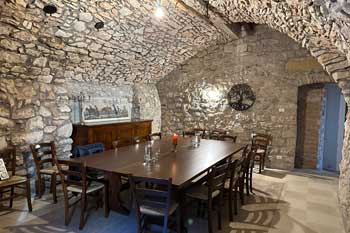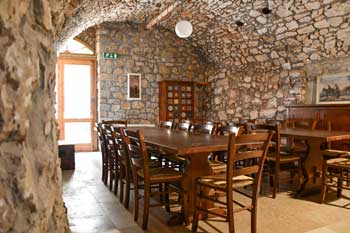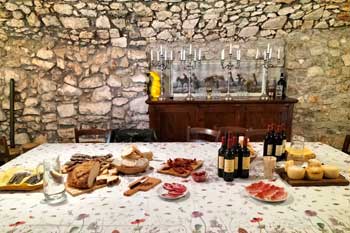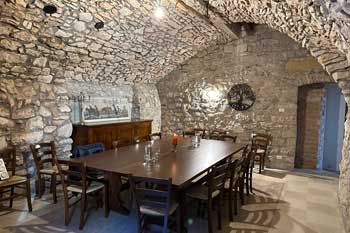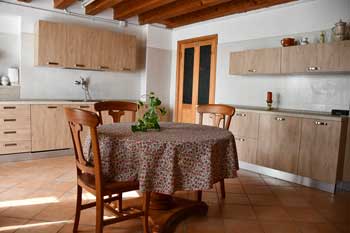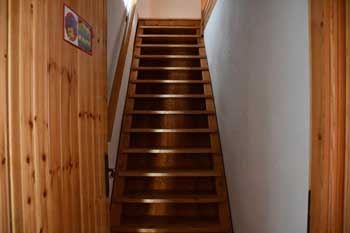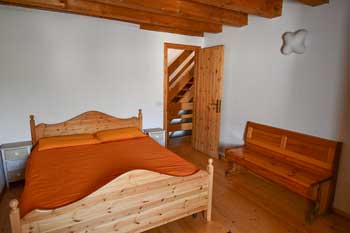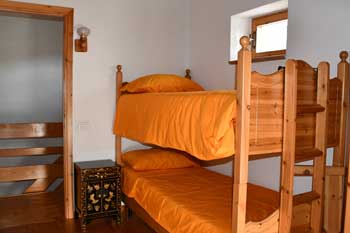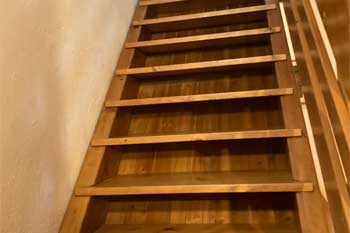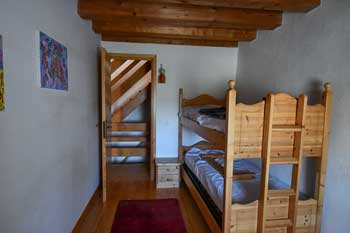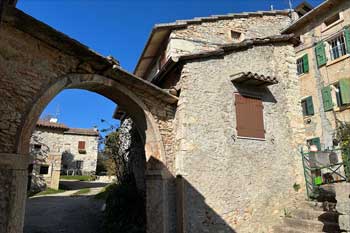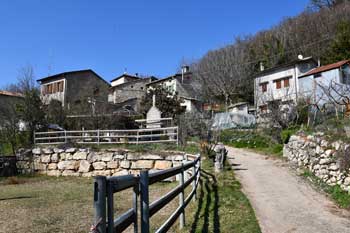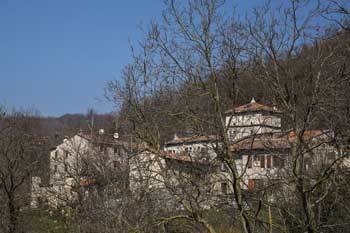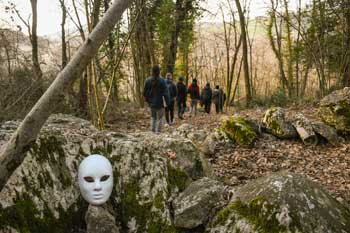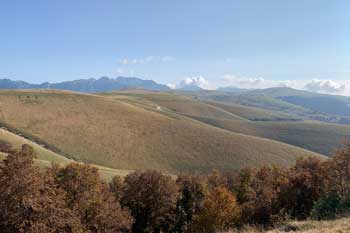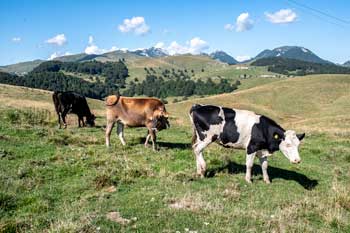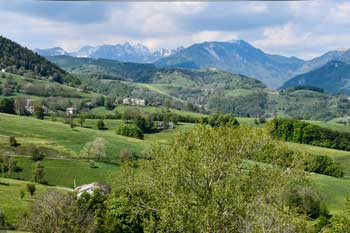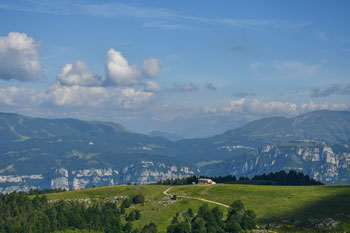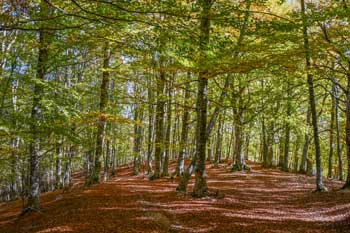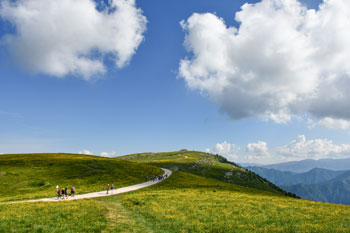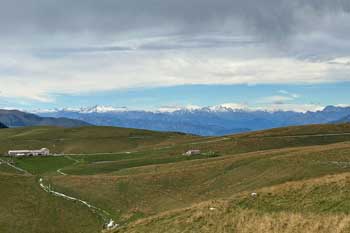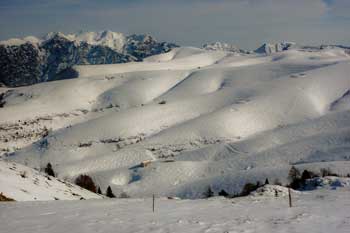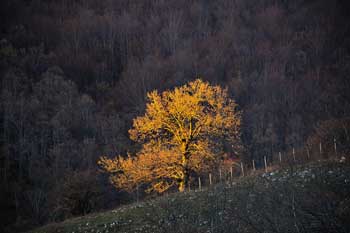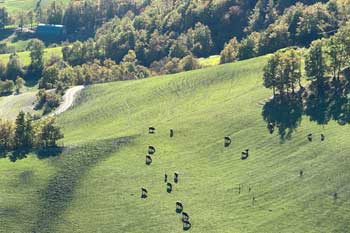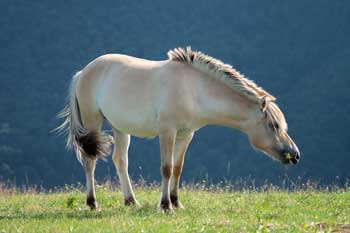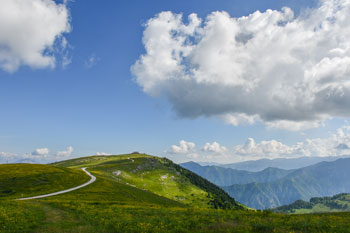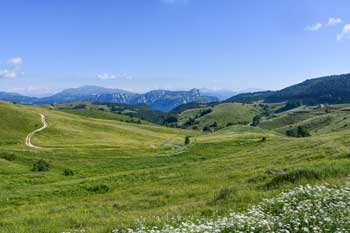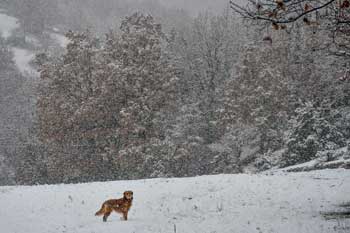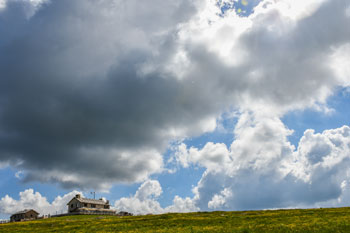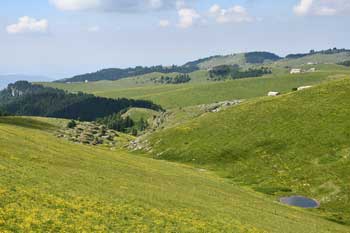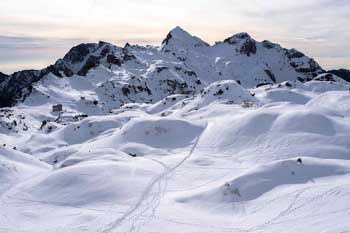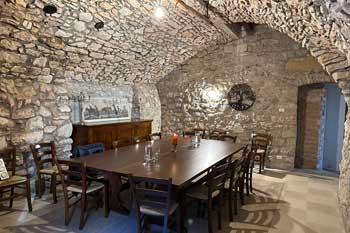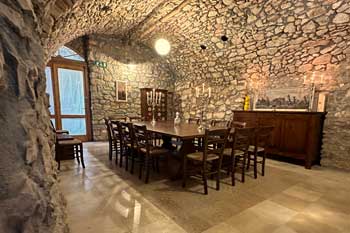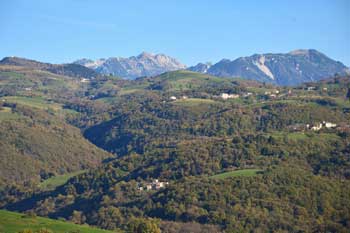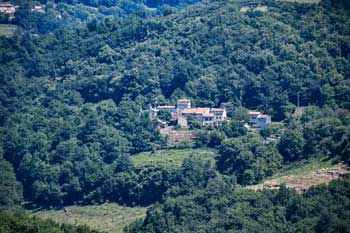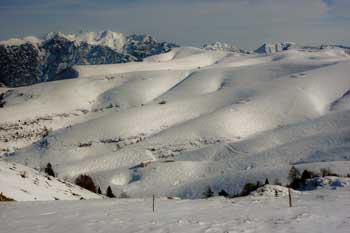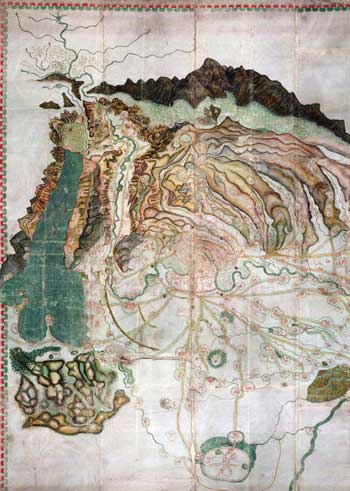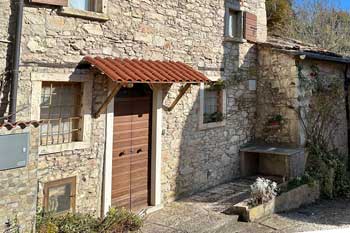Vago Segreta
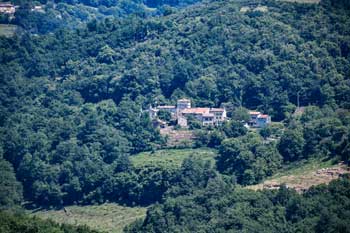
The District
The foundation of Vago dates back to the 12th century, and although it expanded during the 15th and 17th centuries, the structure of the village has remained substantially the same. It was one of the first Cimbrian settlements, located at high altitude that ensured both winter survival and water supply in the summer.
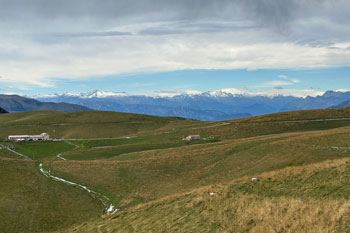
The "Lessinia"
Lessinia is a plateau of the Pre-Alps that lies mainly in the province of Verona. It was inhabited since the 2nd millennium BC because of the abundant presence of water, flint and natural shelters. In the Middle Ages this territory belonged in turns to the Church of Verona, to the Seignory of the Scaligeri and later in the 15th century, it was annexed to the Republic of Venice.
Photo Gallery
The "Segreta"
The "Segreta" is located under the central tower of Vago. The large stone-clad room with a barrel vault is the soul of the building itself.
Legend has it, it had been a prison, however its more likely use is that of a stable, perhaps for horses, given the remarkable and unusual height of the vault.
Yet the legend may also be true. Considering that the original village of Vago had a few houses, the central stable might have been indeed the place where offenders were locked up, awaiting trial or punishment.
The vault of the dungeon is full of mysterious architectural features. A part of the barrel vault is missing because, at a certain point in time, a staircase was built that leaded up to God knows where. There are clear signs of an old opening above one of its side walls, currently closed by stones. There is also a brick and lime wall, closing off an opening to the outside of the village, perhaps a secret passageway, long since occluded. A perforated stone mockingly smiles, concealing other secrets.
The floor of polished “Prun” stone covers the original one of beaten earth, soaked by the liquids spilled by men and beasts over five centuries while in use.
The building was originally a house built in Cimbrian style: the kitchen had a giant fireplace, of which today, only the frame remains, very steep wooden stairs, and two large bedrooms; on the first floor and another one under exposed wooden trusses. The lower room was once reserved for old people and children as they were closer to the warmth of the fireplace, while the upper one belonged to the adults.
Though these ample rooms on the first and second floors have been divided by plasterboard walls ,during the recent renovations; the structure of the house remains the same and is clearly visible on the upper floor by observing how the beams are supported.
The "Vago" District
In the same years in which the Vikings occupied Greenland, taking advantage of a general rise in world temperatures, the Lessinia plateau was permanently occupied by families of Bavarian woodcutters (Cimbri) invited by the Bishop of Verona, owner of these lands, to cut down the forests and make room for pastures for the Church’s flocks.
Vago was one of the earliest settlements placed at such high elevation. This ensured winter survival due to milder climate and water supply in the summertime, thanks to a perennial spring.
The settlement sits on both sides of the only road that runs through the woods. It was developed like a fort for defensive reasons, with low houses, small windows predominantly located on the upper floors, while on the ground floor the Cimbri located the stables with doors strictly facing the inner yards of the settlement.
The village had one gate on the Eastern and one on the Western side that could be closed at night, making the settlement essentially unassailable. A house placed in the center stood several story-high with the function of a keep or tower, which was intended to serve both as a dovecote to house carrier-pigeons and as a last bastion in case of attack.
The foundation of Vago dates back to the 12th century, but the structure of the village has remained essentially the same until today. The structure expanded especially in the 15th and 17th centuries as a result of two events that ravaged the plain; the raids of the Landsknechts during the Hundred Years' War and the plague of the 1600s.
On the stone arch, above what was the ancient gate to the East, a stele bears the date “1602” still legible today.
On the etymology of the name three possible explanations are reported by tradition: from a Latin corruption of the German “Wald”, forest in “valdus,” to the more likely derivations from the Latin “vicus”, village or “vadum,” ford.
The "Lessinia"
Lessinia is a complex plateau of the Pre-Alps that lies mainly in the province of Verona; it is shaped like a hand with many fingers oriented with the palm to the north (ending with the wild Val di Ronchi and Mount Carega), and the fingers turned in a ragged pattern toward the Southeast.
It was inhabited since the second millennium B.C. because of the abundant presence of water, flint and the natural shelters it offered, being characterized by easily fortified hills and caves.
Before the arrival of the Romans, it was the territory of people of Rhaetic and probably Etruscan origin. In the Middle Ages this territory belonged to the Church of Verona, then to the Seigniory of the Scaliger and later in the 15th century it was annexed to the Republic of Venice.
Mountaineers of Bavarian origin were forcibly settled here, since the Middle Ages, and from 1866 until the end of World War I, it was the border between Italy and the Austro-Hungarian Empire. These were years of famine and epidemics, which turned these mountain people of farmers and shepherds into ruthless smugglers.
The limestone soil and abundance of rainfall meant that the plateau was sculpted by water and carved by deep valleys, presenting karst phenomena and monumental natural sculptures (Ponte di Veja).
The lower part (up to 900 meters) is covered by dense coppice and chestnut forests; the middle part (between 900 and 1,400 meters) by coniferous forests; and the higher part above 1,400 meters by endless alpine pastures.
The city of Verona lies between its last Southwestern slopes, making the plateau easily accessible from Verona’s Eastern and Western suburbs through the many valleys (Valpolicella, Val D'Alpone, Val D'Illasi).
Chart of the Almagià
It was commissioned by the government of the “Serenissima” (Venice) around 1460, to enable the Great Council to gain a thorough understanding of the territory it had recently acquired. The elements that characterize the geographical context (mountains, waterways, lakes, swamps, forests) are reproduced with great pictorial suggestion. With equal care all the signs of human presence are depicted in the landscape: the system of roads, fortifications, hamlets and villages and also, with great richness of detail, the complex mountain system of Lessinia.
The parchment was restored in 1997 and it is kept in the State Archives of Venice, available in digital VHD format resolution.
View the Almagià Chart (High Resolution 6850 x 8976 pixels ~25 MB)
via State Archives of Venice
Short-term Lease
Vago Segreta is available for short rentals in self-catering mode, it has 2 parking spaces facing the street, 140 square meters of floor space, 1 dining room called the "Segreta" (about 30 sqm), 1 kitchen (about 30 sqm), 4 independent rooms for a total of 8 beds, 2 bathrooms, heating, linen, towels, cleaning services and Wi-Fi.
The rental price varies according to the time of year or in relation to events in the area and is intended for the entire building, including the "Segreta" on an exclusive use basis.
Easter to the end of Summer, Christmas and New Year period, autumn fairs:
Weekend (Friday, Saturday and Sunday): € 800,00
Weekly (Tuesday to Monday):
€ 1200,00
Other periods:
Weekend (Friday, Saturday and Sunday): € 600,00
Weekly (Tuesday to Monday):
€ 800,00
For staying for more than a week and within 30 days: specific prices and dates on request
Check-In Time: 18:00
Check-Out Time: 12:00
For reservations or other information, call or email us, thank you!
